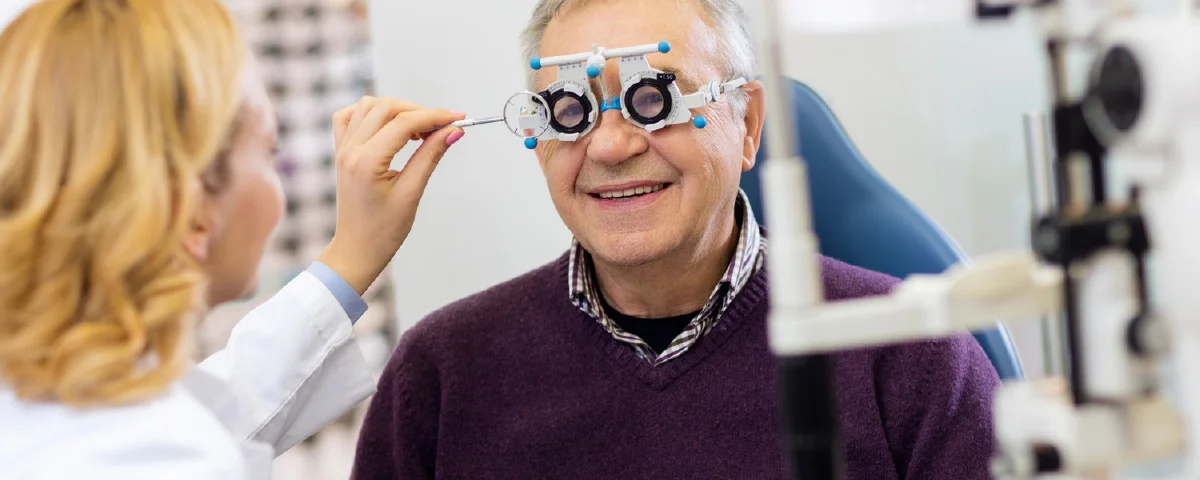Dry Eyes: Symptoms, Causes, and Treatment
/Dry eyes is one of the most common ocular conditions and is one you've probably experienced before or will in the future. For many people, it's a temporary nuisance and not a cause for alarm. However, dry eyes can actually become a debilitating and chronic condition for some. Fortunately, there are several effective treatment options covering the full range of mild to severe cases. Let's look in more depth at what this condition is and what can be done about it.
Symptoms
The symptoms of dry eyes are very uncomfortable and can be quite a distraction. If you have dry eyes, you'll notice a number of the following signs: a burning, stinging, or scratchy sensation in the eyes; blurred vision; redness, irritation, or a feeling that there's something stuck in your eyes; light sensitivity; eye fatigue; and difficulty wearing contact lenses.
Causes
Dry eyes occur when our tears are unable to provide sufficient lubrication. This can happen when not enough tears are being produced or if the quality of those tears is inadequate. Tears themselves are made up of a combination of water, fatty oils, and mucus—all of which are maintained in proper balance to effectively keep our eyes smooth, clear, and free from infection. Because there are a variety of things that contribute to dry eyes, it's worth distinguishing between the physiological and environmental factors.
When the cause of dry eyes is physiological, it's a result of some change occurring in the body. Aging, for instance, is one of the most common culprits, as tear production tends to decrease the older we get. Certain medical conditions—as well as prescription medications—can interfere with tear production, leading to dry eyes. It can also be caused by damage to the tear glands, whether from an injury or from a recent eye surgery, for example. Additionally, some people have in-turning or out-turning eyelids that can inhibit the natural lubrication process. Lastly, our overall health plays a role, too: for example, having a vitamin deficiency.
There are a variety of environmental factors that can cause dry eyes, as well. One of the most common could be related to your daily work or home environment, as many people spend extended periods of time concentrating in front of computer screens (while blinking very little), which leads to dry, uncomfortable eyes. The air around us can also be quick to cause discomfort if it lacks sufficient humidity. The same can be said for wind or smoke: for instance, having an AC vent blowing towards your face or if someone is smoking a cigarette nearby.
Treatment
By paying close attention to the potential cause(s) of our dry eyes, we can more quickly find treatments that provide relief. But, let's first review some simple, preventative measures, including: taking regular breaks during tasks that require concentration, avoiding air directed towards your face, adding humidity to your environment, wearing protective eyewear, not smoking, and even supplementing your diet with vitamins and fatty acids. Also, those who wear contacts should be advised that special lenses are available for people with dry eyes.
If prevention is unable to resolve the discomfort, then consider reaching for the #1 solution for treating dry eyes: eyedrops. In most cases, eyedrops will do the trick, but, if not, there are still plenty of other treatment options, although they will need to focus more closely on your specific situation.
If you have an eyelid condition that causes inflammation (e.g. blepharitis), then frequent eyelid washing may provide relief. Medicated eyelid sprays also help to reduce this type of inflammation. Eyelid massages and warm compresses are both excellent for unblocking the oil glands and increasing the quality of your tears. Other treatment options include addressing any underlying health conditions you may have and also talking to your doctor about switching medications if a prescription could be causing your dry eyes. Lastly, if you have an eyelid condition, consider surgical treatment.
Since we rely so much on our eyes, maintaining ocular health should always be a top priority. While dry eyes can be a frustrating and very uncomfortable condition, by taking preventative measures and implementing an effective treatment protocol, it doesn't have to diminish your quality of life. Please don't hesitate to talk with your eye doctor if you have any questions or concerns.















